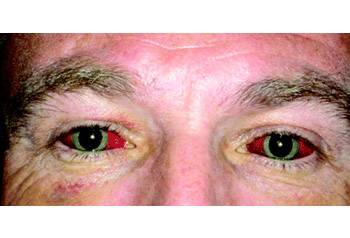Summary
Definition
History and exam
Key diagnostic factors
- presence of risk factors
- musculoskeletal pain
- numbness
- tingling
- paraesthesia
- non-specific constitutional symptoms
- muscular weakness
- paralysis
- rash
Other diagnostic factors
- headache
- ear or sinus pain
- dizziness or vertigo
- nausea
- vomiting
- shortness of breath
- tachypnoea
- difficulty in walking
- reduced hearing
- middle-ear bleeding or tympanic membrane perforation
- pruritus
- reduced level of consciousness
- crackles
- wheezing
- reduced breath sounds
- subcutaneous emphysema
Risk factors
- increasing depth and duration of dives (decompression illness)
- breathing gas mixture
- rapid ascents (decompression illness)
- altitude exposure after diving (decompression illness)
- thermal stress (decompression illness)
- exercise stress (decompression illness)
- patent foramen ovale (PFO) (decompression illness)
- increasing age (decompression illness)
- high body fat content (decompression illness)
- dehydration (decompression illness)
- breath hold diving
Diagnostic investigations
Treatment algorithm
Contributors
Authors
Charlotte Sadler, MD
Program Director, Undersea and Hyperbaric Medicine Fellowship
Associate Professor of Clinical Emergency Medicine
University of California, San Diego
La Jolla
CA
Disclosures
CS has authored two chapters in UpToDate on diving medicine and fitness to dive, for which she receives royalties. She has also authored chapters on similar topics in CorePendium (online textbook) and Tintinalli's Emergency Medicine - these chapters are not reimbursed. She has previously received grant funding from the PADI Foundation to study COVID-19 in Divers.
Brian Snyder, MD
Clinical Professor of Emergency Medicine
Department of Emergency Medicine
University of California, San Diego
La Jolla
CA
Disclosures
BS has updated a number of book chapters as part of his role at the University for which he is not remunerated financially.
Casey Smith, MD
Fellow of Hyperbaric and Dive Medicine
Department of Emergency Medicine
University of California, San Diego
La Jolla
CA
Disclosures
A portion of CS's salary as Fellow of Hyperbaric and Dive Medicine was provided by the Diver Alert Network (DAN).
William Toppen, MD
Fellow of Hyperbaric and Dive Medicine
Department of Emergency Medicine
University of California, San Diego
La Jolla
CA
Disclosures
A portion of WT’s salary as Fellow of Hyperbaric and Dive Medicine was provided by the Diver Alert Network (DAN).
Acknowledgements
Dr Charlotte Sadler, Dr Brian Snyder, Dr Casey Smith, and Dr William Toppen would like to gratefully acknowledge Dr Oliver M. Firth and Dr John D. King, both previous contributors to this topic. OMF and JDK declare that they have no competing interests.
Peer reviewers
Avi Shupak, MD
Head Otoneurology Unit
Carmel and Lin Medical Centers
Haifa
Israel
Disclosures
AS declares that he has no competing interests.
John R. Fitz-Clarke, MD, PhD
Staff Hyperbaric Physician
Queen Elizabeth II Health Sciences Centre
Halifax
Nova Scotia
Canada
Disclosures
JRFC declares that he has no competing interests.
Use of this content is subject to our disclaimer
